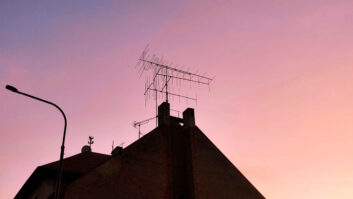
The author, a former engineering executive for several broadcast owners, is a consultant in signal quality improvement and antenna system design. Clients include SWR Inc.
I have written in Radio World (Dec. 3, 2008, Readers Forum) about coverage-area benefits to stations of the SWR Illumitron antenna; its proprietary technology eliminates side lobes and puts more than 99 percent of a station’s signal on the horizon, toward the market area and the audience.
The topic prompts some broader thoughts about how stations choose antennas.
One of the most significant factors determining the success or failure of any FM broadcast station is the quality and coverage of its signal. A station that does not provide a clean, interference-free signal throughout its market area cannot expect high numbers in audience share or in revenue, regardless of programming.
Many FM stations have limitations regarding available transmitter site or power; however, an even greater number of stations suffer from inadequate coverage due to poor antenna performance.
The result of poor antenna performance is simple, but the cause is often complex and subject to many common misconceptions:
- “All FM broadcast antennas are pretty much alike.” Although they may look alike and have similar performance specifications, various makes and models may behave in very different ways in specific environments, due to subtle design differences.
- “A competent engineer can select the best antenna for my station by comparing published specifications.” In almost every case, the tower and other factors affect the antenna pattern and performance as much as the antenna itself. Overall results of any specific combination of antenna, tower and site environment can be determined only by actual measurement or by an accurate computer model of the entire installation.
- “Replacing an older antenna with a newer model will correct most signal quality and coverage problems.” It is possible; however, this may only replace old problems with newer ones. To be safe, the replacement antenna should be selected and its installation supervised by a well-qualified broadcast engineer, preferably using site-specific engineering.
- “If the antenna manufacturer provides measured patterns of his antenna on a tower similar to mine, I am assured of good results.” Many manufacturers provide “generic pattern data” taken from measurements using a single bay on typical tower faces. Only the azimuth pattern is provided, and the elevation pattern of a multi-bay antenna on your tower is not considered or tested. At your station, most of the signal may go down toward the ground or up to the sky rather than reaching your market area or your audience.
- “The coverage area of any FM station depends only on the ERP (power) and HAAT (height) of its antenna, per the FCC license.” This is true only if all of the authorized power reaches the intended market area. Experience shows that only a small portion of the actual radiated power can reach the audience using “conventional” antenna designs and construction. Often, due to multiple lobes and nulls, part of this energy takes a different route to the audience, causing multipath interference to the primary signal.
- “Best coverage for an FM station can be achieved by locating the antenna at an existing multiple site or antenna farm.” Such common sites and “antenna farms” typically are located at a place that allows good coverage of the entire market area, although there may be reasons more political than technical for determining the specific location. The primary disadvantage of a common site is the close proximity of other antennas that may affect the pattern and coverage of your antenna.
It is important to use site-specific engineering for your station, including a detailed computer model of the site and all nearby towers and antennas. With this accomplished, all of the stations can enjoy good coverage.
Contact the author at[email protected]. Comment on this or any article to[email protected].







